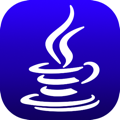Cloud features dropped from Java EE 7
 Following in the footsteps of the forthcoming Java Standard Edition version (Java SE 8), it is becoming apparent that certain previously announced features in the next Java Enterprise Edition version (Java EE 7) will now not make the cut. According to Oracle engineer Linda DeMichiel, in order to be able to complete the specification by next spring, Platform-as-a-Service (PaaS) and multi-tenancy support are likely to be deferred until Java EE 8.
Following in the footsteps of the forthcoming Java Standard Edition version (Java SE 8), it is becoming apparent that certain previously announced features in the next Java Enterprise Edition version (Java EE 7) will now not make the cut. According to Oracle engineer Linda DeMichiel, in order to be able to complete the specification by next spring, Platform-as-a-Service (PaaS) and multi-tenancy support are likely to be deferred until Java EE 8.
Although Java EE applications can already run under Oracle, Red Hat, IBM and CloudBees cloud platforms, DeMichiel, who heads the responsible working group as part of JSR 342, says that the technologies are not yet mature enough for full standardisation. She believes that fully standardising cloud features could mean delaying Java EE 7 until spring 2014. A proposal has therefore now been submitted to the Java EE 7 Expert Group to delay standardisation of PaaS and multi-tenancy support until Java EE 8, which is scheduled for release in the spring of 2015.
The next version of Java EE was originally due to be released in the fourth quarter of this year. The release date was then put back to spring 2013 in order to permit the inclusion of new features such as Web Sockets and JSONP (JSON with padding). In common with Java Persistence API 2.1, Java API for RESTful Services 2.0, Expression Language 3.0, Java Message Service 2.0, JavaServer Faces 2.2, Enterprise JavaBeans 3.2, Contexts and Dependency Injection 1.1 and Bean Validation 1.1, these features will apparently be retained.
The current version 6 of Java EE was released in December 2009. It introduced a division between web and full profiles. The web profile version, a slimmed down version of the full profile, included only features typically used in Java web applications. Thirteen application servers are currently compatible with Java EE 6.
(crve)
![Kernel Log: Coming in 3.10 (Part 3) [--] Infrastructure](/imgs/43/1/0/4/2/6/7/2/comingin310_4_kicker-4977194bfb0de0d7.png)

![Kernel Log: Coming in 3.10 (Part 3) [--] Infrastructure](/imgs/43/1/0/4/2/3/2/3/comingin310_3_kicker-151cd7b9e9660f05.png)
















